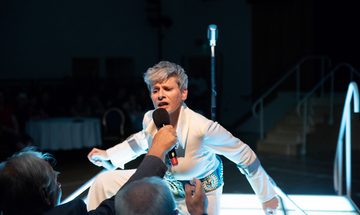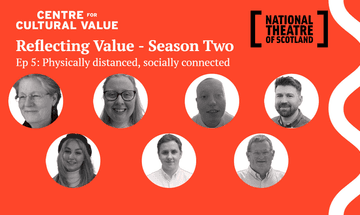From the heights of the Cairngorms to the streets of Glasgow: all in a day’s work
Latest10 Jun 2019
News Story
With the founding principle of being a theatre without walls, everyone at the National Theatre of Scotland is ready for the unexpected to be a part of their day, and the week of May 20th was no different. From the Cairngorms to Glasgow, the week saw the creation of two radically different projects, which perfectly encompass the breadth of our work in their expansive range of themes, formats, and scenery.
Starting in the Cairngorms, the team worked with artist and choreographer Simone Kenyon and artist filmmaker Lucy Cash on the new short film How The Earth Must See Itself, created in response to Kenyon’s performance project Into The Mountain. A project with collaboration at its core, it emerged when four women were drawn together through Simone’s research and their shared love of Nan Shepherd: Lead artist Simone Kenyon, artist filmmaker Lucy Cash, the National Theatre of Scotland’s Artistic Director Jackie Wylie, and Scottish Sculpture Workshop’s Director Sam Trotman. The idea for the film emerged from a want to capture elements of Simone Kenyon’s large scale, live project Into The Mountain which took place in June 2019.
This new short film will bring together Kenyon’s original choreography and concept for Into The Mountain developed over eighteen months, with new choreography for camera. Cash’s artful and poetic cinematography shot on 16mm film captures the movement relationship between performer, camera and environment. It will feature the score created by Hanna Tuulikki for the live performances sung by a choir of local women alongside extracts from Shepherd’s original prose, creating a new film work for National Theatre of Scotland On Screen.
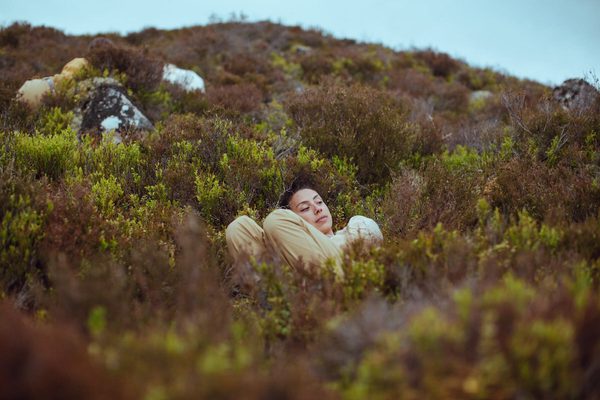
The filming location was in Glenfeshie at the foot of the Cairngorm Plateau. While the team had explored using a horse to assist with the transport of the kit to the remote mountain location, it quickly became obvious that no vehicle nor animal would help us reach the destination. Going by foot, carrying filming gear, food and drinks, and mountaineering kit was the only way (and as it turned out, part of the beautiful process of capturing this film).
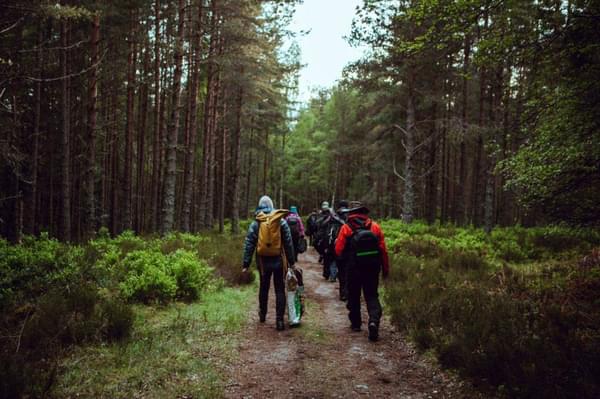
The film captures elements of Kenyon’s Into The Mountain performance – from the choreography created by Kenyon and performed by Jo Hellier, Claricia Parinussa, Caroline Reagh, Keren Smail and Petra Söör through to the costumes which echoe and engage with the surrounding geography. Cash’s work considers the movement relationship between performer, camera and environment as well as the choreography between images and sound inherent in film editing. Wearing beige hand-knitted jumpers with knitting patterns responding directly to the shapes, forms and colours found in the natural landscape of the Cairngorms, the performers’ costumes designed by Jeni Allison and Hilltrek were reminiscent of the early 20th century mountaineering gear. The subtle, careful movements performed by the dancers and the camera merge them slowly with the surroundings, offering poignant visual responses to Shepherd’s original thoughts on nature, mindfulness and connection.
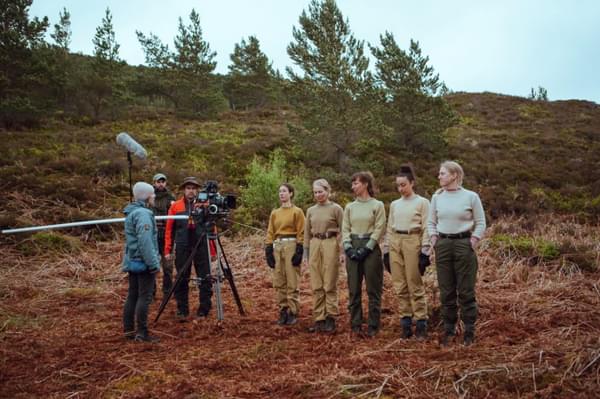
Nan Shepherd’s The Living Mountain was written over seventy years ago during the Second World War, although it was not published until much later in 1977, when Aberdeen University Press printed a small run of the book. This ode to the Cairngorms resonated with many in its description of the connection between humans and nature, and reframed the discourse surrounding mountaineering by shifting the focus away from nature as a space for conquest and individual pursuit. Instead, Shepherd put forward a more aware and connected attitude toward landscape and the natural world, and proposed a mindful experience of walking, breathing, and existing in the open wilderness. This shift in perception interrogated the gendering of mountaineering as tradition and practice, as well as questioning our relationship to nature. Now more than ever, The Living Mountain reminds us of the intrinsic connection between people and landscape, and the need to shift our perspective from nature as an object to be owned and controlled, to nature as a space for communion and reflection – an argument that resonates deeply with our contemporary ecological concerns.
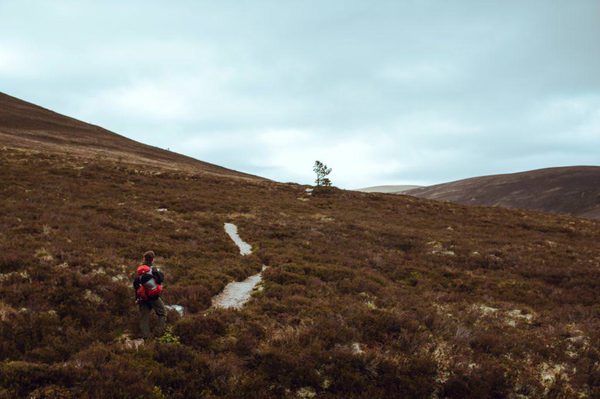
At the same time, on the other side of the land, Scottish Indie legend Eugene Kelly was spotted across Glasgow filming an exciting new short film. Working with director Stewart Laing, movement director Natali McCleary and Video Director Anna Chaney, the National Theatre of Scotland team assisted with the creation of a visionary and darkly-comic short film to be shown as part of the production of Them!, with an original score by Carla J. Easton, who also composed for the show.

The film sees Taxi driver Toni (Eugene Kelly) become gradually disconnected from reality and other people, while the world around him changes in drastic yet unknowable way. The theme driving the film’s narrative was inspired by the classic 1955 b-movie of the same name, where giant ants attack humans after a nuclear mutation caused them to grow over eight feet long. While the 150,000 ants set to appear in the show will (hopefully) remain at their natural size, the uncanny horror of the original film is referenced in this new short through the insertion of an equally tantalising and terrifying threat to an otherwise rather monotonous city life, only reinvented for the modern age. What exactly that threat is, you will have to come experience for yourself. All that we can tell you is that the show will also feature an ad break, similarly dark in tone and humour, and posing a quintessentially Scottish question: what whisky to drink before the end of the world?
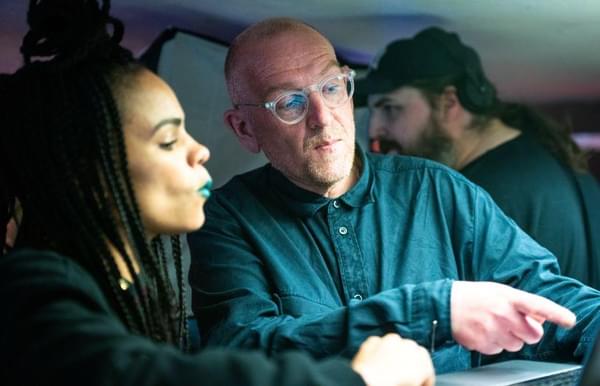
While How The Earth Must See Itselfresponds to and amplifies the beauty and cultural significance of the Cairngorms, the films produced for Them!centres on iconic Glaswegian sights, as much as its characters. From Clyde Arch to Cedar Court, Glasgow’s architecture, history, and urban life is at the heart of the production – both on screen and onstage.
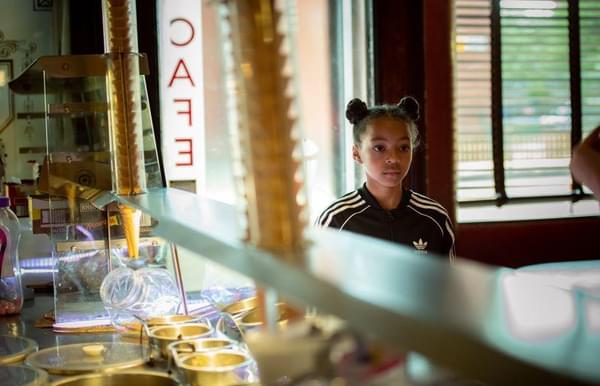
This week truly showed us the breadth and diversity of work that it is possible to achieve when working with the ethos of a theatre without walls – a theatre without borders or restrictions, physically or imaginatively, but also a theatre that is nourished by the plurality of artistic fields contributing to its making. While this week of work took us to places as vast and varied as the Cairngorms mountain tops, or the streets of Glasgow on a grey spring afternoon, it also brought together artists from varied backgrounds and practices: theatre, literature, film, craft, performance, and sound united to create How The Earth Must See Itself; film, music and architecture came to join theatre to build Them!
Photography by Beth Chalmers and Tommy Ga Ken Wan
